Winterize Kenmore Gardens: Expert Plant Health Tips
Quick Guide to Winterizing Your Kenmore Garden:
- Understand Ottawa’s winter challenges: frost heave, snow load, windburn.
- Perform a thorough fall cleanup: remove annuals, diseased plants, manage leaves.
- Protect vulnerable plants: use mulch correctly, wrap sensitive shrubs, mound roses.
- Winterize your lawn: final mow, aerate, fertilize, clear leaves.
- Plant spring bulbs and improve soil health in the fall.
As winter approaches in Ottawa, protecting your garden investment is key. Don’t let frost and snow damage your beautiful plants. Need help getting your Kenmore garden ready? Request a free quote today!
Brrr-ace Yourselves! Winterizing Your Kenmore Garden is Easier Than You Think
Alright, Ottawa neighbours, let’s face it – another winter is just around the corner! We’re talking snowdrifts taller than your mailbox and that special kind of cold that chills you right to the bone. While we humans have our cozy homes (and maybe a stockpile of hot chocolate), our gardens in Kenmore need a bit of help to survive the frosty onslaught. Those gorgeous flower beds and trusty shrubs you enjoyed all summer? They’re relying on *you* to protect them from harsh winds, deep freezes, and that sneaky frost heave that can damage roots. Winterizing isn’t just some fussy gardening task; it’s crucial for ensuring your beloved plants pop back up healthy next spring. Think of it as giving your landscaping a warm winter blanket. But hey, don’t let the thought overwhelm you! Preparing your Kenmore garden for its winter slumber is *way* easier than navigating rush hour on the 417. We’re here to guide you step-by-step.
Facing the Freeze: Understanding Ottawa’s Winter Gauntlet & Your Garden’s Needs
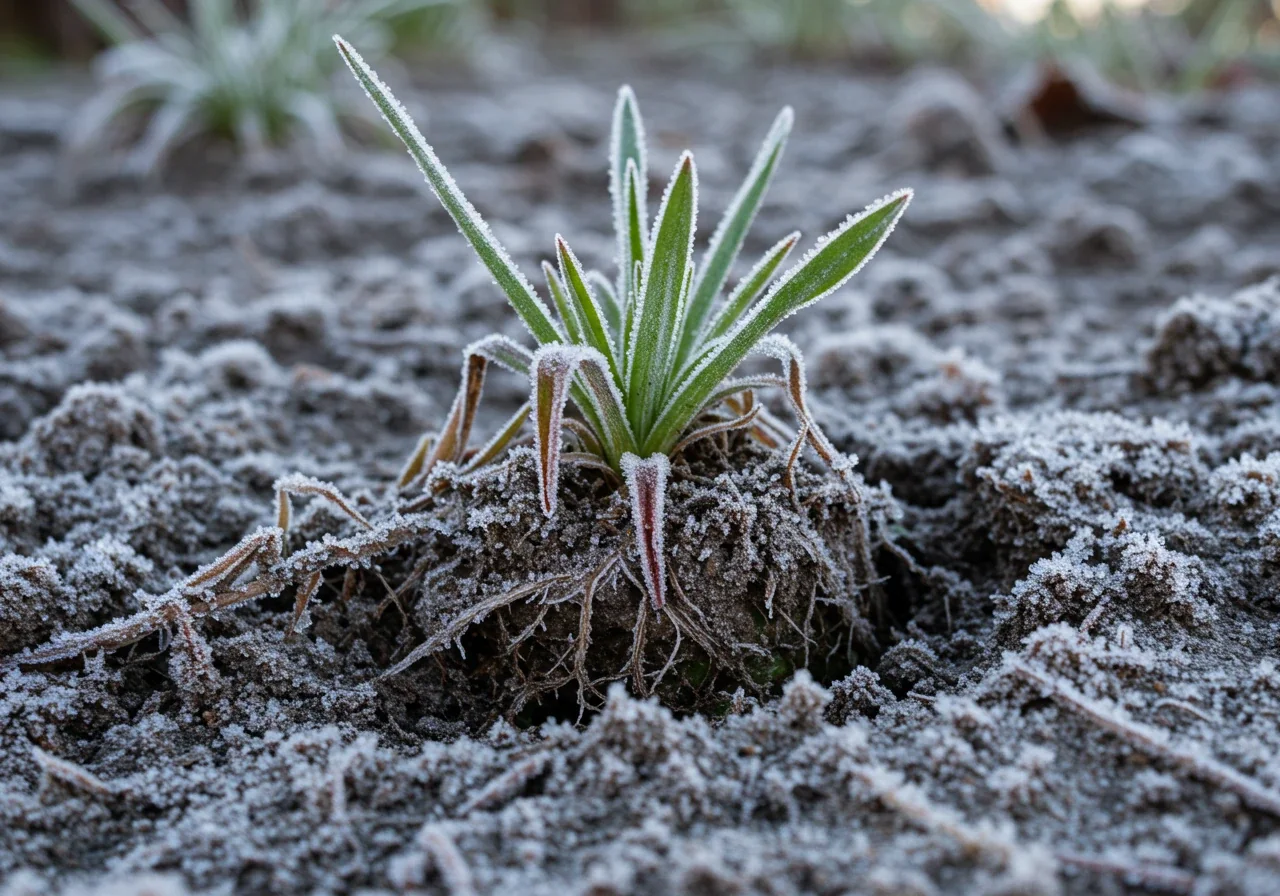
Alright, let’s talk turkey – or maybe snow bunting, considering the season! Ottawa winters aren’t just cold; they’re a real *gauntlet* for our gardens. It’s more than just snow piles; it’s a unique mix of challenges that can leave unprepared plants looking pretty sad come springtime, whether you’re gardening in bustling or leafy Manotick.
First up, the infamous freeze-thaw cycle. Our weather loves to play tricks, swinging from deep freeze to slushy meltdown and back again. This constant expansion and contraction of moisture in the soil causes “frost heave,” which can literally push plants, especially shallow-rooted ones, right out of the ground or damage their roots. Think of it like the ground doing unwelcome yoga poses under your perennials. Clay soils, common in some parts of our region, hold more water and can heave dramatically, while sandy soils might freeze deeper.
Then there’s the snow. While a consistent blanket of fluffy snow acts like a natural insulator (nature’s own mulch!), heavy, wet snow can be brutal, snapping branches on shrubs and evergreens. And let’s not forget the wind! Those biting winds, especially in more open areas like Osgoode, can whip across your yard, drying out evergreen needles (windburn) and causing serious damage.
So, what are our plants doing during all this? They enter dormancy – basically, a deep sleep to conserve energy. They slow their growth way down, but they aren’t immune to the harsh conditions. They still need protection from root damage, dehydration, and physical breakage. This is why winterizing is so vital. It’s not just about tidying up; it’s about providing support. This includes protecting structural elements too; for instance, properly is crucial. Similarly, ignoring your watering systems can lead to costly repairs; understanding is essential homeowner knowledge. The same goes for larger setups, making . Even thinking ahead about next year, like planning a , benefits from ensuring the foundational plants survive winter well.
Understanding these Ottawa-specific winter challenges helps explain *why* we mulch, wrap shrubs, and take other protective steps. Need a hand navigating this winter prep? Check out the range of professional landscaping and winterizing services available to help your garden face the freeze and thrive next year. Visit our Google My Business page to see reviews from satisfied Ottawa clients.
Winterizing Perennials
Most hardy perennials benefit from cleanup and mulching. Cut back diseased foliage, but consider leaving sturdy stems like Coneflowers or Sedum for winter interest and wildlife support. Apply 2-4 inches of mulch (shredded leaves, straw) *after* the ground lightly freezes to prevent frost heave. Keep mulch away from plant crowns.
Winterizing Shrubs & Trees
Protect young trees from rabbits/voles with tree guards. Wrap broadleaf evergreens (Rhododendrons, Boxwood) loosely with burlap to prevent windburn and sunscald, especially in exposed locations. Gently tie upright evergreens to prevent snow load damage. Ensure adequate moisture before ground freeze.
Winterizing Roses
Hybrid Teas and Floribundas need extra care. After dormancy, lightly prune dead/diseased canes. Mound loose soil or compost 8-12 inches high around the base, covering the graft union. Use fresh material, don’t scrape from around roots. Rose cones can be used cautiously (ensure ventilation).
The Big Tidy-Up: Prepping Your Beds Before the Snow Flies
Alright, let’s roll up those sleeves one last time before the serious chill sets in! That beautiful Ottawa summer display needs a proper send-off to ensure your garden beds bounce back beautifully next spring. Think of this fall cleanup as tucking your garden in for its long winter nap – a crucial step to prevent pests, diseases, and general springtime sadness. Don’t worry, it’s less daunting than finding parking downtown on a Saturday!
Here’s your game plan for the Big Tidy-Up:
- Farewell to the Annuals: Those lovely petunias and marigolds gave their all, but their life cycle is complete. Pull them out, roots and all. Leaving them to rot can invite disease. Pop them in your compost bin *unless* they showed signs of sickness.
- Evict Diseased Plants: Speaking of sickness, be ruthless! Any plants suffering from powdery mildew, black spot, blight, or serious insect infestations need to go straight into the garbage or yard waste bags – *not* the compost. We don’t want those problems overwintering and returning with a vengeance. *Pro Tip:* Wipe your pruners or trowel with rubbing alcohol or a bleach solution between cuts on diseased plants to avoid spreading trouble. Clean tools are happy tools!
- The Great Perennial Debate: Cut Back or Leave Standing? This is where things get interesting. Tradition often says to cut everything back. It looks tidy, sure. But! Leaving sturdy stems (like those on ornamental grasses, coneflowers, or sedum) provides winter interest (frost looks amazing on them!) and offers seeds and shelter for birds. Delicate perennials or those prone to disease are usually best cut back after a few hard frosts. Consider the plant and your own aesthetic preferences. You could even make a quick pro/con list for your main perennial types to decide!
- Leaf Wrangling Strategies: Ah, the leaves! Rake them off your lawn to prevent smothering the grass. In garden beds, however, *shredded* leaves are black gold! Run your mower over a pile (if safe to do so) or use a leaf shredder. This shredded leaf mulch insulates roots, suppresses weeds, and breaks down beautifully, enriching the soil. Just avoid piling whole, wet leaves thickly against plant crowns, as this can promote rot. Managing heavy leaf fall, especially in leafy neighbourhoods like Barrhaven or Richmond, can be a big job. Remember that removing debris is key for pest and disease control, denying shelter to unwanted critters and spores. If the volume is overwhelming, consider getting assistance. Whether you need the dedicated Vernon property cleanup service or similar expert help like our Marionville yard cleanup service, professional crews can make short work of it. Check out all our fall property clean up services if the task feels too big.
- Final Tool Polish: Once the beds are clear, give your tools a final clean and sharpen before storing them away for winter. A little oil helps prevent rust. You can find resources on tool maintenance from reputable sources like the Ottawa Horticultural Society.
Taking these steps now sets your garden up for success next year. It’s a bit of work, but future-you will be grateful! If you’re already a Clean Yards client, you can easily schedule your cleanup through our customer portal. And if you’re getting an estimate from us, we appreciate you sharing your thoughts via our estimate feedback form – it helps us tailor our services perfectly! Happy tidying!
Tuck ‘Em In Tight: Protecting Vulnerable Plants from Winter’s Wrath
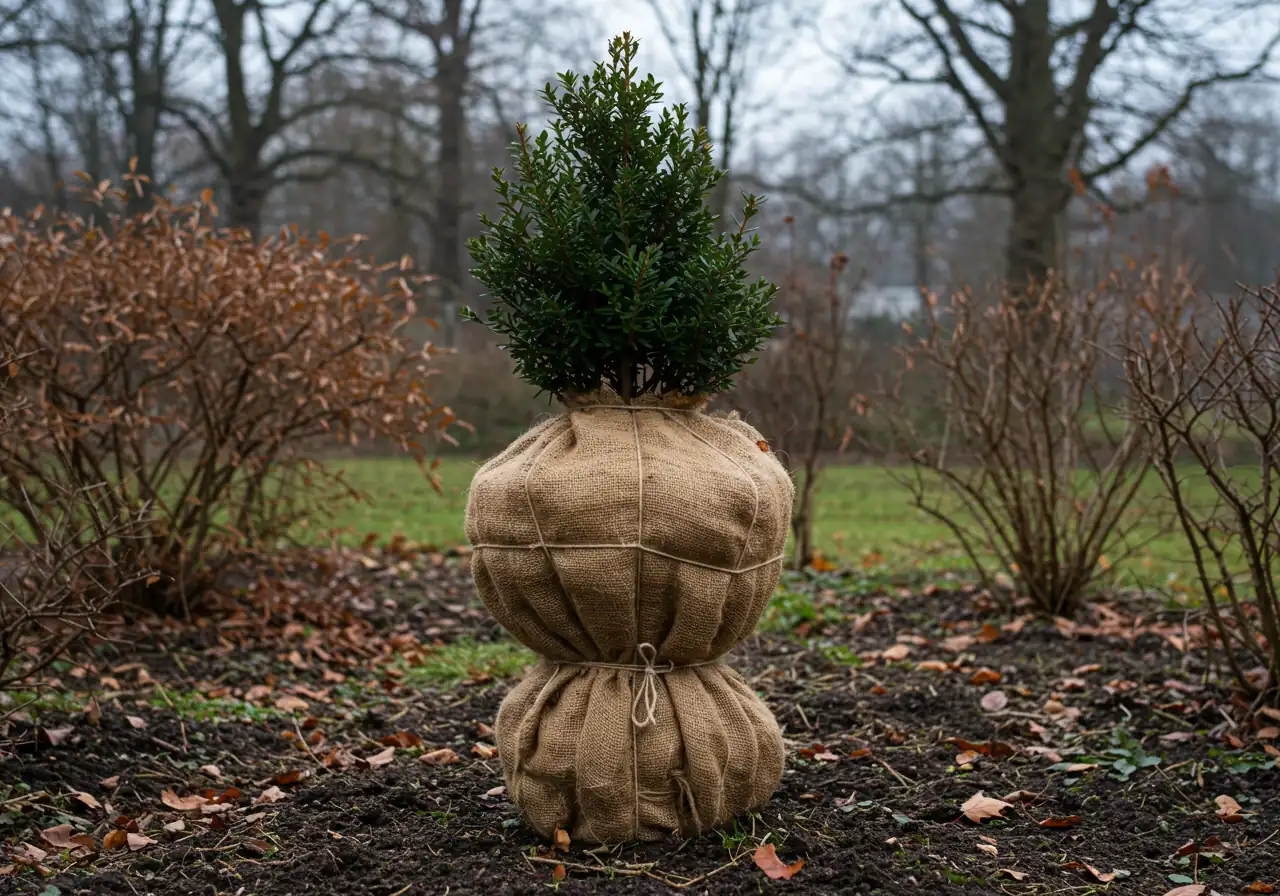
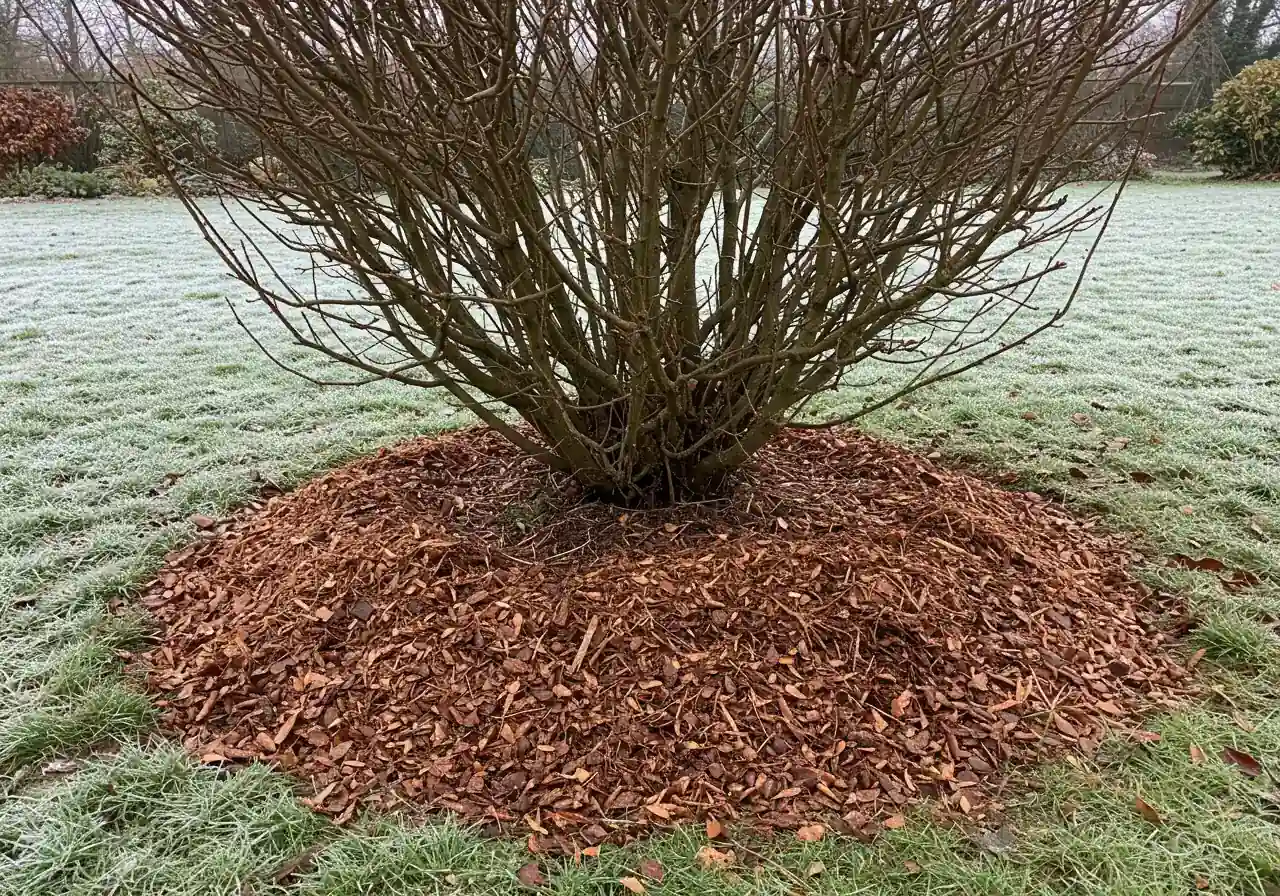
Okay, team, we’ve tidied up the garden beds, but some of our leafy friends need more than just a clean space to survive an Ottawa winter. Think of your tender perennials, fancy roses, young trees, or broadleaf evergreens – they’re the ones shivering just thinking about January! Giving them some extra protection is like handing them a warm parka and fuzzy boots. It’s crucial for ensuring they greet you with gusto next spring, rather than… well, not greeting you at all.
Mulch: The Coziest Blanket
Mulch is your number one defense against the ground doing the freeze-thaw shuffle we talked about earlier. But *timing is everything*! Don’t pile it on too early while the ground is still warm; that just creates a cozy condo for mice and voles looking for winter digs. Wait until the ground has *lightly frozen*, usually after a few good hard frosts (typically late October or November here).
- What kind? Shredded leaves (free!), straw, or wood chips work great. Avoid heavy, dense materials that get soggy.
- How much? Apply a layer about 2-4 inches (5-10 cm) deep over the root zone.
- Important: Keep mulch pulled back an inch or two from the actual stems or trunk of the plant. Piling it right against the base can trap moisture and lead to rot or create hiding spots for pests. Consistent mulching is a cornerstone of good garden maintenance, improving soil health year-round.
Wrap Stars: Burlap & Tree Guards
Some plants need more than a blanket; they need a windbreaker!
- Burlap Wraps: Best buddies for broadleaf evergreens (like rhododendrons and some hollies) and other shrubs prone to winter windburn or sunscald (damage from winter sun reflecting off snow). Wrap sensitive shrubs loosely with burlap in late fall, after they’ve gone dormant. You can create a screen on the windiest side or wrap the whole plant. *Crucial:* Don’t wrap tightly like a mummy! Leave space for air circulation. Secure it with twine. Choosing the right method takes experience; it’s something the team you can learn about us has perfected over many Ottawa winters.
- Tree Guards: Essential for young trees with thin bark, especially fruit trees. Why? Rabbits and voles! These critters get hungry in winter and find tender bark *delicious*. This is particularly true in areas bordering fields or woods, like around Kars or Vernon. Wrap the base of the trunk with plastic spiral guards or wire mesh *before* the snow flies, extending higher than the expected snow depth if possible. Make sure the guard isn’t strangling the trunk. Before applying guards or mulch, ensure the immediate area is clear of debris – a task often tied into final lawn care efforts like leaf removal.
Royal Treatment for Roses
Roses, particularly hybrid teas and floribundas, often need special winter care in our climate. Once the plants are fully dormant (after several hard frosts, leaves have dropped):
- Prune lightly: Remove any obviously dead or diseased canes. Major pruning waits until spring.
- Mound ‘Em Up: Gently mound loose soil, compost, or triple mix around the base of the rose bush, covering the graft union (the knobby bit where the top part joins the rootstock) by about 8-12 inches (20-30 cm). *Do not* scrape soil from around the rose’s own roots for this; bring in fresh material.
- Optional: Some gardeners use rose cones, but be cautious. They can sometimes trap moisture or heat up too much on sunny winter days. Ensure they are well-ventilated if you use them.
Dodging the Salt Spray
If you live along a busier road, perhaps heading into Metcalfe, road salt spray is a real menace to roadside plants, especially evergreens. The salt spray dehydrates needles and buds, causing browning and dieback. Creating a physical barrier using burlap stretched between stakes on the road-facing side *before* winter sets in can significantly reduce damage. For future plantings in these areas, consider salt-tolerant species recommended by resources like Rideau Valley Conservation Authority.
Protecting your vulnerable plants takes a bit of effort now, but the payoff next spring is huge. Seeing those plants leaf out, healthy and strong, makes it all worthwhile. If tackling all this winter prep feels like too much, don’t hesitate to reach out. We’re happy to provide guidance or a helping hand – just let us know what you need when requesting an estimate, and feel free to share your thoughts afterward using our estimate feedback form. When you contact us for assistance, rest assured your personal information is handled carefully as outlined in our privacy policy. Sweet dreams to your plants!
Lawn Love Before Lights Out: Winterizing Your Turf
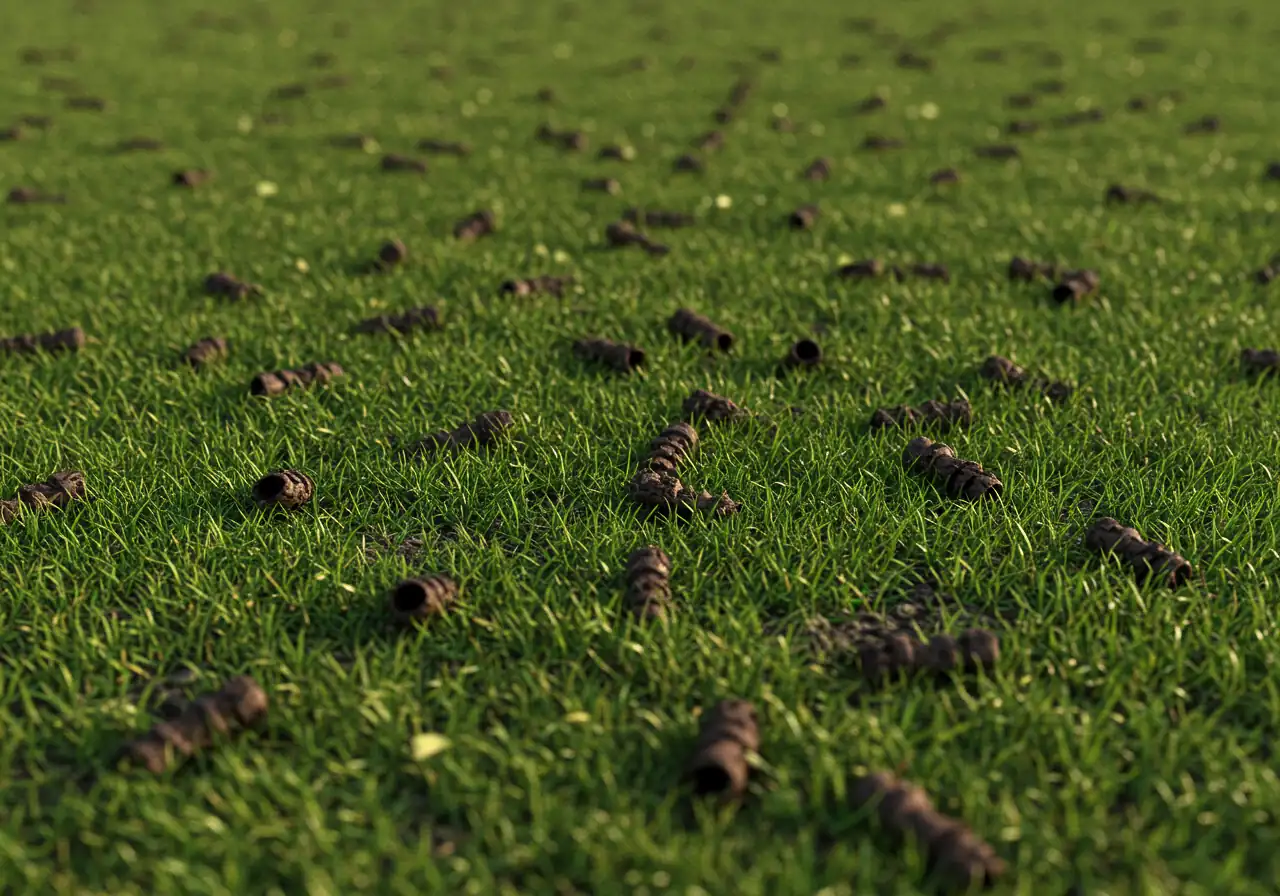
Okay, your garden beds are tucked in, but what about the green carpet itself? Your lawn might look tough, but it needs some TLC before the snow flies to wake up happy next spring. Ignoring your turf now is like sending it into hibernation without a snack – definitely not cool! Let’s talk about giving your Ottawa lawn some serious *love* before lights out.
First up is the last haircut of the season. Don’t scalp it, but don’t let it go into winter looking like a fluffy monster either. Aim for a final mowing height of about 2.5 to 3 inches. Grass that’s too long can mat down under snow and invite nasty fungal guests like snow mold. If it’s cut too short, you reduce its ability to store food reserves for the long winter ahead. Keep mowing as needed until the grass stops actively growing, which is usually sometime in late October or early November around here.
Next, let it breathe! We’re talking about aeration. Ottawa soil, especially in areas like Russell or Embrun that might have heavier clay, can get seriously compacted over the summer from foot traffic and mowing. Aeration – the process of pulling out small plugs of soil – is like a deep-tissue massage for your lawn’s roots. It breaks up compaction, allowing crucial air, water, and nutrients to penetrate deeper. This is a key step in good fall soil preparation for a healthier lawn and really helps the roots thrive through the winter.
After aerating is a great time for the winter feast – fall fertilization! Applying a slow-release fertilizer specifically formulated for fall helps your grass develop strong roots right up until the ground freezes solid. It also provides the stored energy needed for a vigorous green-up next spring, often resulting in a noticeably healthier lawn compared to unfertilized ones. It’s a fundamental part of smart professional lawn care practices.
Don’t forget leaf duty! Seriously, you *must* get those fallen leaves off your lawn before winter truly sets in. A thick, wet blanket of leaves blocks sunlight and air, smothering the grass and creating a damp, perfect breeding ground for diseases like snow mold (those ugly grey or pink circular patches you might see in spring). Rake, mulch-mow (if the layer isn’t too thick), or blow them off regularly. If the leaf volume feels overwhelming, remember that professional help is available. Our crews handle tasks ranging from the specific Marionville garden clean up service to broader property clearing with our comprehensive Ottawa yard cleanup service.
A quick note on seeding: While the *ideal* window for overseeding thin patches is usually late summer to early fall (giving new seedlings time to establish before the deep freeze), ensuring your existing lawn is healthy and well-prepped going into winter is paramount. Proper winterization supports the turf you have and sets the stage for successful future lawn and garden transformations come spring.
Giving your lawn this winter prep might seem like extra chores, but it pays off big time when you see that lush, resilient green carpet emerge next spring. Sweet dreams, turf!
Average Ottawa Snowfall (Oct-Dec)
*Approximate monthly averages. Heavy snow requires preparation!
Beyond the Basics: Bulbs, Soil Health, and Eco-Conscious Winterizing
Okay, so you’ve done the big tidy-up, protected your tender plants, and given the lawn its final marching orders. High five! But wait, there’s more! Think of this next stage as the *advanced class* in winter prep – focusing on next spring’s surprises, building super soil, and being kind to Mother Nature while we’re at it.
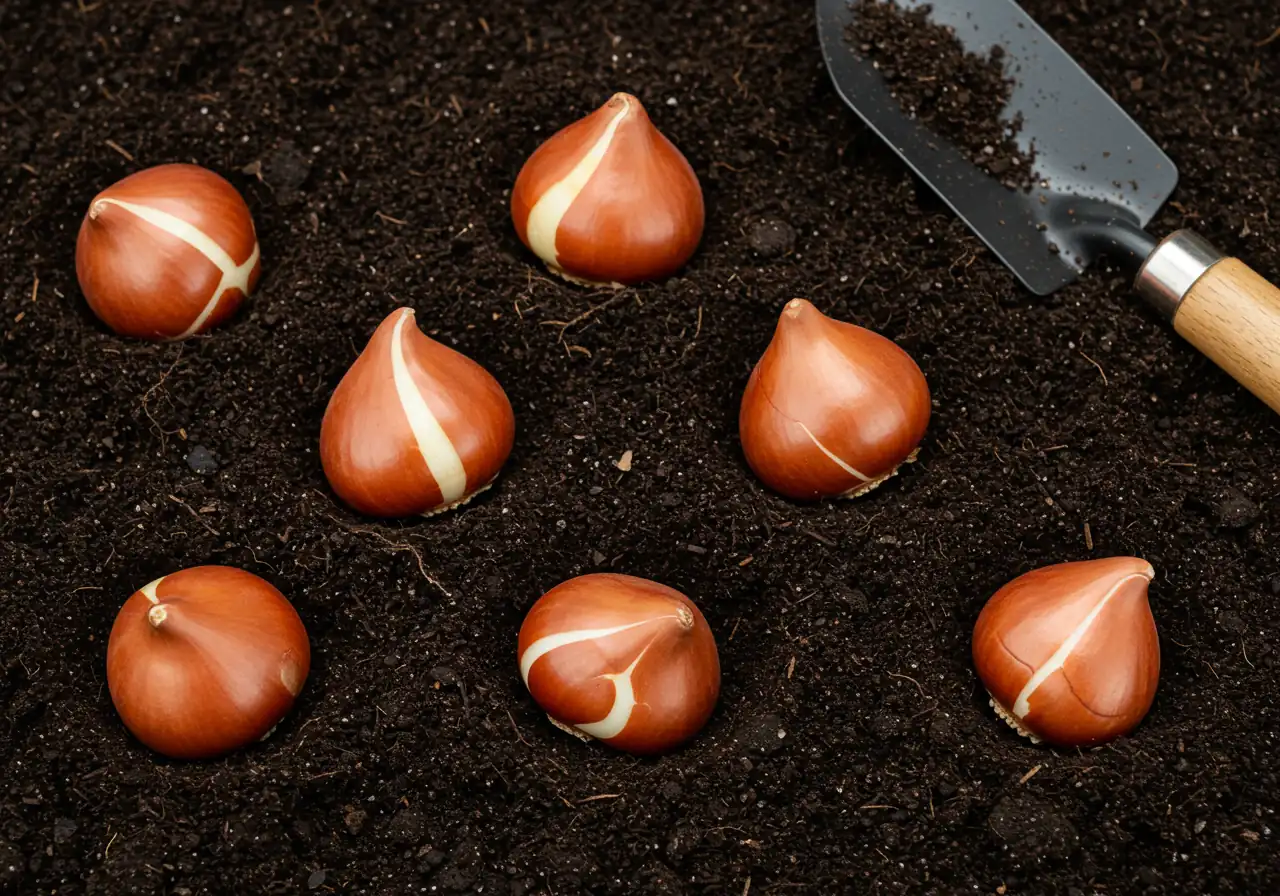
Planting Spring Dreams: Time for Bulbs!
Want a glorious burst of colour when the snow *finally* melts? Fall is prime time for planting spring-flowering bulbs in Ottawa. Our hardiness zone (around 5a) is perfect for tough beauties like tulips (especially Darwin hybrids or species tulips), cheerful daffodils (which critters tend to ignore!), crocuses, grape hyacinths (muscari), Siberian squill, and fragrant hyacinths. Planting them now lets them establish roots before the deep freeze. Just remember the golden rule: pointy end up! Dig the hole 2-3 times deeper than the bulb’s height, pop ’em in, cover ’em up, and dream of spring. It’s like burying little treasures for future you.
Feed the Soil, Feed the Soul (and Your Plants!)
While you’re digging holes for bulbs, think about giving your soil a boost. Fall is a fantastic time for soil amendment. Why now? Because adding organic matter like compost, well-rotted manure, or shredded leaves lets the soil microbes work their magic over winter, improving structure and fertility without you lifting another finger until spring! You can gently dig amendments into empty beds or simply spread a layer (top-dress) around existing perennials (keeping it away from crowns, remember?). Healthy soil is the foundation of a great garden, supporting everything from tiny bulbs to potentially laying the groundwork for professional sod installation for a perfect lawn next year by improving the underlying ground.
Winterizing with a Green Heart
Being eco-conscious doesn’t stop when the temperature drops. Here are a few ideas:
- Save Water: Disconnect and drain garden hoses and irrigation lines to prevent freezing and bursting. Give drought-sensitive plants one last deep watering *before* the ground freezes solid, but avoid unnecessary watering.
- Support Wildlife: While you cleaned up diseased material, consider leaving some sturdy seed heads (like coneflowers or grasses) standing for birds. A small, out-of-the-way brush pile can offer shelter for beneficial insects and small critters. It’s all about balance! Getting your yard ready in an eco-friendly way, especially dealing with large amounts of organic debris for composting or removal in areas like Metcalfe, can be streamlined with options like the expert Metcalfe yard cleanup service.
- Choose Natural: Opt for natural winter protection like shredded leaves or straw mulch instead of plastic wraps whenever possible. Making wise material selection for sustainable gardening extends to winterizing materials too. If the fall tasks are piling up faster than the leaves, remember that help is available – even tasks like final garden clearing can be managed professionally, similar to the focused Marionville garden clean up assistance we offer. Learn more about local composting via the City of Ottawa’s Green Bin program.
These extra steps aren’t just good for your garden; they contribute to a healthier local environment right here in Ottawa. Every little bit helps! Got more questions about boosting your soil or eco-friendly options? Don’t hesitate to get in touch with us – we love talking dirt!
Ideal Fall Winterizing Timeline
Early Fall (Sept-Early Oct)
Plant spring bulbs. Divide crowded perennials. Overseed lawn if needed. Start initial cleanup of spent annuals and obvious debris.
Mid-Fall (Mid-Oct – Early Nov)
Continue leaf cleanup. Cut back perennials (selective). Perform lawn aeration and apply fall fertilizer. Last lawn mow. Drain hoses/irrigation.
Late Fall (After first hard frosts, ~Late Oct/Nov)
Apply winter mulch *after* ground lightly freezes. Mound soil around roses. Install tree guards. Wrap sensitive shrubs with burlap. Final cleanup.
Early Winter (Dec)
Ensure protective wraps/guards are secure. Gently brush heavy snow off delicate branches if possible. Relax and dream of spring! Check our thank you page after booking service.
Kenmore Winter Wonders: Quick Tips for Success
Okay, let’s cut through the winter fluff and get straight to the good stuff! Consider these your “insider secrets” for making sure your Kenmore garden doesn’t just survive the Ottawa winter, but actually comes back looking fabulous next spring. Think of it as the cheat sheet for winterizing success!
- Mulch Timing Magic: Don’t jump the gun! Here in Ottawa, wait until the ground *just* freezes (usually late Oct/early Nov) before applying your winter mulch (like shredded leaves or straw). Doing it too early creates a five-star rodent hotel right at the base of your precious perennials. Timing is everything to avoid unwanted guests!
- Snow Load Smarts: Remember those heavy, wet snowfalls that make shovelling feel like weightlifting? They can snap branches like pretzel sticks. For vulnerable upright evergreens or delicate shrubs, gently tie the branches upward with soft twine *before* the first big snowfall. This simple trick helps them shed snow instead of catching it. Think prevention, Kenmore neighbours!
- Critter Counter-Offensive (Pre-Snow Edition): Don’t wait for the snow to camouflage hungry critters! Put tree guards on young trees and consider barriers around tasty shrubs *before* the white stuff arrives. Voles and rabbits get surprisingly bold when food is scarce, especially in areas near open fields like around Kenmore or nearby Metcalfe. Keeping the base clear of tempting debris is also key – if leaf litter is overwhelming your space, remember the pros like the expert Metcalfe property cleanup service can make quick work of it.
- The Pre-Freeze Power Drink: Before the ground locks up solid, give your evergreens, newly planted shrubs (especially those from a recent landscaping project where you were busy planning your dream garden install), and even perennials one last, *deep* watering. They can’t sip from frozen earth, and those winter winds are incredibly drying. It’s like giving them a canteen for their winter trek.
- Lawn Resilience Secret: We know raking isn’t everyone’s favourite fall activity, but a final lawn cleanup is non-negotiable to prevent ugly snow mold come spring. Rake, blow, or mulch-mow off *all* those leaves and debris – seriously, clear the decks! If the task feels bigger than Ben Hur across your entire property, the comprehensive Ottawa garden clean up service can be a real sanity-saver. A clean lawn goes into winter stronger, setting the stage for spring success, whether you’re maintaining your current turf or dreaming about professional sod installation for a perfect lawn next year.
Your Ottawa Winter Garden Questions Answered (FAQ)
Well, your neighbour might be playing garden roulette! While some tough plants survive neglect, winterizing is like insurance for your landscaping investment. It helps prevent root damage from frost heave, protects shrubs from breaking under snow, and reduces pest issues come spring. Skipping it risks losing plants you love (and paid for!), so we definitely recommend taking protective steps.
Ideally, you want most tasks done *before* the ground freezes solid and we get permanent snow cover, often aiming for mid-to-late November in areas like . However, life happens! Light cleanup and applying mulch can sometimes be done during brief thaws. Just know that working with frozen ground is tough, and early prep gives plants the best chance.
Oh, the rusty regret! Leaving soil caked on tools invites rust over winter, dulling blades and stiffening hinges. Come spring, you’ll face extra scrubbing, sharpening, or even needing replacements. A quick clean, dry, and maybe a wipe with oil before storing them somewhere dry saves you hassle and money later. It’s much easier than spring tool rehab!
It’s risky business! The freeze-thaw cycles are brutal on roots confined in pots, often killing the plant. Terracotta pots can also crack. Your best bets are moving pots to an unheated garage or shed, burying the pots in the garden (insulates roots), or using *very* large, frost-proof containers for only the hardiest plants. Protecting pots ensures your setup looks great year after year – check out our winter garden project gallery for inspiration on how tidy yards look even in the off-season.
You’re not alone – fall cleanup can be a huge job! If leaf piles seem mountain-high or you’re short on time, hiring help is a great option. Professional crews make quick work of leaf removal, perennial cutbacks, and final mowing. The comprehensive Ottawa property cleanup service covers everything, or we offer targeted help like the Metcalfe garden clean up service for specific community needs. We also serve Marionville and surrounding areas.
Absolutely! Many tough native plants and well-established hardy perennials laugh off Ottawa winters. Think sturdy Coneflowers (Echinacea), Black-Eyed Susans (Rudbeckia), Peonies, Hostas (once dormant), and many ornamental grasses. They usually just need basic cleanup. However, remember that specific plant guarantees, whether DIY or through a service, often have care requirements. You can review general service expectations in our terms and conditions.
Sleep Well, Garden! Setting Up for Spring Success in Kenmore
Okay, Kenmore gardeners, let’s wrap this up like a precious rhododendron! Putting your garden properly to bed for our Ottawa winters isn’t just about looking neat; it’s the *key* to ensuring vibrant spring success. Think of all that effort – preventing root damage from that crazy freeze-thaw cycle, protecting shrubs from heavy snow loads, and giving your lawn the strength to bounce back – as a crucial investment in your landscaping’s health. A little prep now prevents a *lot* of springtime heartache (and maybe some replacement plant costs!). It ensures your beloved plants wake up refreshed and ready to dazzle, instead of looking like they wrestled a polar bear.
Taking these winterizing steps helps guarantee that the hard work and resources you’ve poured into your garden all season pay off with lush growth and beautiful blooms next year. It’s about protecting your investment and setting the stage for another gorgeous Ottawa gardening season.
Feeling like the fall tasks are piling up higher than the leaves? Don’t let winter prep give you the chills!
Get Pro Winterizing Help Now!Whether you’re right here in Kenmore, over in Russell, out towards Embrun, or near Vernon, Clean Yards is ready to help. Let our pros handle the final garden chores and winterizing tasks so you can relax. *Reach out to us today* for a no-obligation quote on getting your garden winter-ready! Or, *visit our website* to explore all our fall property clean up and professional landscaping services. Let’s help your garden sleep tight and wake up bright!


